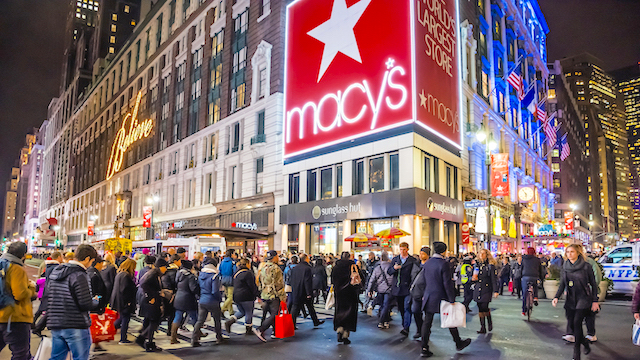In a decisive move, Macy’s has determined that it needs to close around 100 full-line department stores – almost 15 per cent of all the full-line stores it currently operates.
As much this move is sensible, especially as it will allow Macy’s to focus investment and attention on its better performing stores, it is a self-inflicted defeat. The blunt truth is that Macy’s has simply not bothered with a large rump of stores for many years: they have lacked investment, been devoid of management attention, and now look distressed and dispirited.
Macy’s is right to identify that the cost of correcting this state of affairs is too high relative to the returns that would be yielded, but it could have avoided this situation by taking a more disciplined approach some time ago.
Of course, the biggest shame of this is for the staff at those stores that will be closed. Senior management has failed them, mainly because of a lack of focus, ambition and attention to detail, and becoming too distracted with too many initiatives while ignoring the core US retail business.
The other major concern is for the locations in which those stores will close. While Macy’s may no longer be the premier destination it once was, it occupies large units and still drives customer traffic. Those malls and centers losing a Macy’s store will have a big hole to fill and will need to think creatively about how to fill it – especially as there will not be many takers for such a large space. The likely outcome is to split the space up and encourage rising retailers, like TJMaxx or Primark, to move in. This would maintain customer traffic – something that is desperately needed if the centers and malls, and the other stores in them, are not to suffer from the departure of Macy’s.
Closing stores is all well and good, but alone it is not sufficient to save Macy’s. As such, it is encouraging that Macy’s sees this move as part of a wider program to reinvent itself and will direct the savings from shuttered stores into its remaining locations. Execution will be critical: Macy’s simply cannot afford to get this wrong or to skimp on its reinvention. It needs to completely overhaul the experience to make stores easier to shop, more interesting to browse, and more relevant to today’s shopper. This includes the introduction of more services such as its Bluemercury beauty offer, and advice on styling for both fashion and home; a greater number of events, including things like fashion shows, are also critical to draw in customers. It should also bring an end to the unsound idea of incorporating Backstage discount offerings into mainstream stores; this was never compatible with Macy’s full-line stores, but it is even less suitable for its more upscale aspirations.
Given Macy’s neglect of its stores over recent years, this is a step change for the group. As laudable and correct as its intentions are, the jury remains out as to how effective and committed the group will ultimately be to making these changes. Macy’s has bitten the bullet, but if it fails to undertake all of the corrective surgery necessary it will end up in the same situation as now, but as a much smaller group less able to cope with sales and profit pressures.
The dismal sales figures for the second quarter underline why such action is necessary. It is of scant comfort that Macy’s issues the proclamation that its numbers have improved since the last quarter, when that quarter saw one of the worst revenue slumps in over a year.
Granted, these numbers are somewhat better but they only return Macy’s to a more normalised level of trading and, indeed, represent a marked deterioration on the same period during the prior year when total sales fell by 2.6 per cent and comparable sales by 2.1 per cent.
More worrying, however, is the profit number which, at net income level, fell by a dramatic 95.8 per cent. After all of its activity during the quarter Macy’s only managed to generate a dangerously low $9 million of profit. Admittedly this does take into account some hefty impairment costs that the company is absorbing as it looks to shut stores, but even so it pushes Macy’s ever close to that vicious cycle of declining sales coupled with losses that Sears has found itself in for some time.
- Neil Saunders is CEO of retail analyst Conlumino.






